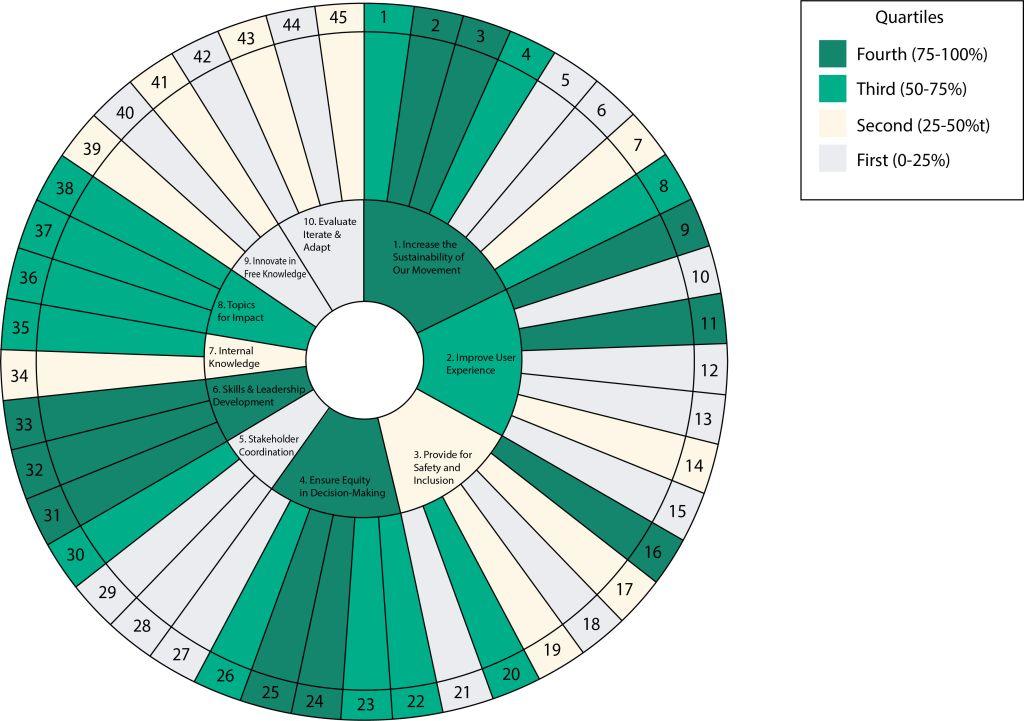Ever wondered how users interact with your website or app? Which areas grab their attention, and which parts they simply ignore? That’s where heatmaps come in!
They’re a simple but incredibly powerful tool that can transform the way you understand your audience and improve your site’s performance.
If the term “heatmap” sounds a bit technical or intimidating, don’t worry. By the end of this guide, you’ll have a clear and practical understanding of heatmaps—even if you’re completely new to the concept.
What Is A Heatmap?
Let’s start with the basics!
A heatmap is a visual representation of data where different colors indicate the intensity of user interactions or activity. Think of it like a weather map: red and orange show “hot spots” of high engagement, while blue and green highlight cooler, less active areas.

Why Is It Called A ‘HEATMAP’?
The name comes from its color-coding system, which is similar to how heat is represented in thermal imaging. In heatmaps, “hot” colors like red indicate more activity, such as frequent clicks or views, while “cool” colors like blue show less activity.
Types of Heatmaps and What They Reveal:
Heatmaps aren’t one-size-fits-all. Different types of heatmaps offer unique insights depending on what you want to analyze. Let’s break them down:
(1) Click Heatmaps:
These are the most common type of heatmap. They show where users click on a page—whether it’s a link, button, image, or even an area that isn’t clickable (yes, users do that too!).
How It Helps:
Click heatmaps can tell you if your CTAs (Call-to-Action buttons) are working or if users are drawn to unexpected areas.
(2) Scroll Heatmaps:
Ever wondered how far down the page people actually scroll? A scroll heatmap visualizes this by showing you where users stop scrolling.
How It Helps:
If your important content is at the bottom of the page and most users never get there, it’s time to rethink your layout.
(3) Move Heatmaps (Mouse Tracking):
This heatmap tracks the movement of users’ cursors across the page. While it doesn’t directly show where users are looking, studies suggest there’s a correlation between mouse movement and eye movement.
How It Helps:
Great for understanding navigation patterns and finding out if users struggle to find what they need.
(4) Eye Tracking Heatmaps:
Unlike move heatmaps, these require specialized equipment to track where users’ eyes focus on the screen. Eye tracking heatmaps are less common due to their cost but are incredibly precise.
How It Helps:
They’re ideal for in-depth UX research, especially when testing new designs or layouts.
(5) Attention Heatmaps:
These heatmaps predict which areas of your page are most likely to grab attention, based on factors like layout, contrast, and element size.
How It Helps:
Perfect for designing visually appealing and high-converting web pages.
Why Should You Use Heatmaps?
Heatmaps are like a secret window into your users’ minds. They help you see exactly how visitors interact with your site and pinpoint what’s working—and what’s not. Here are a few reasons why heatmaps are invaluable:
- Improve User Experience: By understanding what catches users’ attention, you can make their journey smoother and more intuitive.
- Boost Conversion Rates: Heatmaps highlight obstacles in your sales funnel so you can fix them.
- Optimize Content Placement: See if important elements like headlines, images, or buttons are getting the attention they deserve.
- Reduce Bounce Rates: Learn why users might be leaving your site and address the issues head-on.
How Heatmaps Work?
Heatmaps look simple, but they’re built on complex data tracking. Here’s how it works:
- Data Collection: Heatmap tools track user actions like clicks, mouse movements, or scroll behavior.
- Data Aggregation: This data is then compiled and processed to identify patterns.
- Color Mapping: The tool assigns colors to areas based on activity levels, creating the visual map you see.
Top Heatmap Tools You Can Use:
There’s no shortage of heatmap tools on the market, but here are some of the most popular options:
- Hotjar: Perfect for click and scroll heatmaps, plus session recordings.
- Crazy Egg: Offers A/B testing and detailed heatmaps.
- Microsoft Clarity: A free tool with excellent features.
- Mouseflow: Includes heatmaps, session replays, and form analytics.
How To Use Heatmaps Effectively?
Heatmaps are only as valuable as the insights you draw from them. Here are some tips to make the most of them:
- Focus on Key Pages: Analyze pages that matter most to your goals, like landing pages, product pages, or checkout pages.
- Combine with Other Data: Use heatmaps alongside tools like Google Analytics to get a full picture of user behavior.
- Segment Users: Break down your audience into groups (e.g., mobile vs. desktop users) for more targeted insights.
- Act on Findings: If a heatmap shows a problem—like users ignoring a CTA—don’t just note it. Fix it!
Limitations Of Heatmaps
It’s important to know what heatmaps can’t do:
- They Don’t Explain Why: A heatmap can show you what users are doing, but you’ll need other tools or methods to understand why.
- They Need Data: For reliable insights, you need a decent amount of user data. Heatmaps based on small samples can be misleading.
- They Aren’t Real-Time: Most heatmaps rely on historical data, so they’re not ideal for monitoring live activity.
Wrapping It Up
Heatmaps are a must-have tool for anyone who wants to understand their audience better. If you’re looking to boost engagement, increase sales, or simply improve your site’s usability, heatmaps can give you the insights you need to make smarter decisions.
Start experimenting with heatmaps on your website today, and you’ll be amazed at how much they can reveal. Remember, the more you understand your users, the better your site will perform.
SIMILAR ARTICLES:
- How To Create And Sell Digital Downloads: A Step-By-Step Guide For Beginners
- What Is Print On Demand? How To Start A No-Cost Print On Demand Business And Make Money

